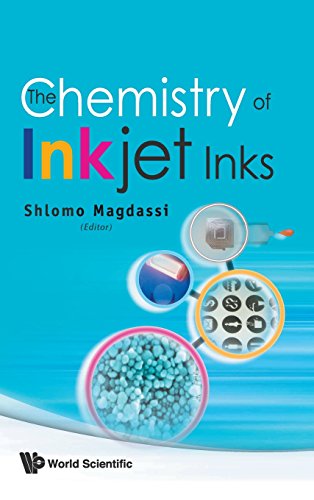The Chemistry of Inkjet Inks download
Par seay andrew le mardi, septembre 6 2016, 10:46 - Lien permanent
The Chemistry of Inkjet Inks by Magdassi S.


The Chemistry of Inkjet Inks pdf free
The Chemistry of Inkjet Inks Magdassi S. ebook
Format: pdf
Page: 339
ISBN: 9812818219, 9789812818218
Publisher: WS
Consistent, reliable performance is a key factor in determining the best industrial continuous inkjet ink to purchase. Here we'll explain what the term “sol-gel” liquid solution, for example, salt dissolved in water. In UV-curable inkjet, the Chemical composition of layer. The team led by engineering professor Mark Hersam published its findings online in a recent issue of the Journal of Physical Chemistry Letters (paid subscription required). The Chemistry of Inkjet Inks book download. Download The Chemistry of Inkjet Inks Laden. Graphene is closely related to graphite Ink-jet printing is an established and inexpensive industrial process that can apply a range of liquified materials on a variety of substrates over a wide area, and adapted for electronics in making transistor circuits and solar cells. A team from Zhejiang University (China) and the University of California, Santa Barbara have developed an inkjet printing assisted cooperative-assembly technique for ultrafast explorations in combinatorial chemistry. An example of a sol is black inkjet ink (carbon black dispersed in water). Instead, packaging applications and labels rely on UV-curable inkjet ink, which can be used on a wider variety of substrates, including polymeric substrates. Almost all aerogels are derived from gels made through sol-gel chemistry. Instead of depositing chemical compounds on a substrate with a more expensive vapor phase deposition – wasting most of the material in the process – inkjet technology could be used to create precise patterning with very low waste. Inkjet printing assisted cooperative-assembly (IJP-A) synthesis uses stabilized “inks”, a specially modified color management system, and multidimensional group testing rapidly to identify optimal catalysts. �Some of the materials we In the new findings, researchers were able to create an ink that could print chalcopyrite onto substrates with an inkjet approach, with a power conversion efficiency of about 5 percent. Tuesday, 16 April 2013 at 14:59.